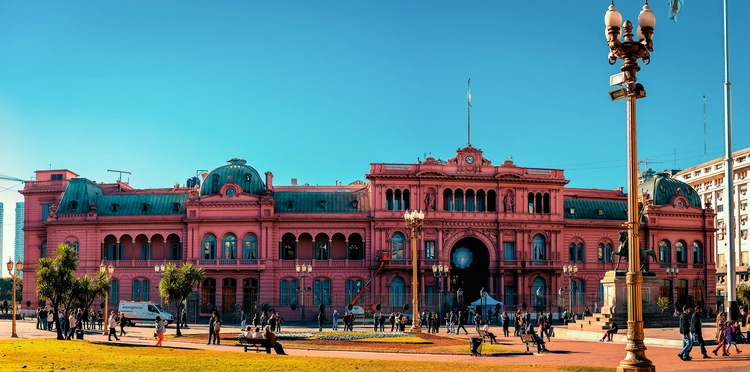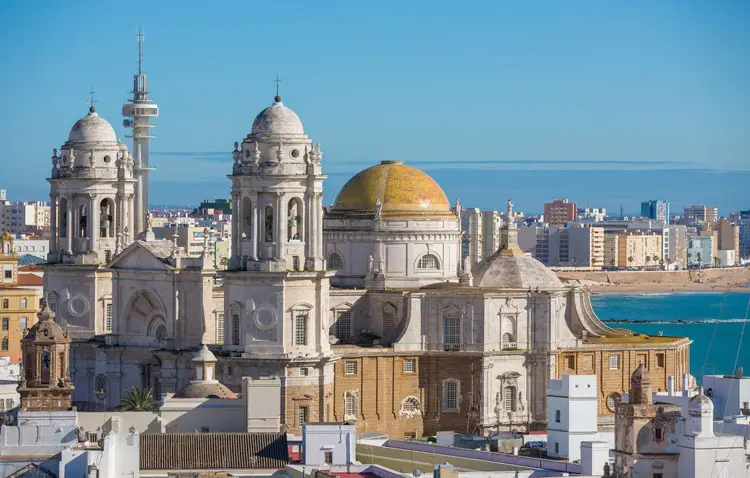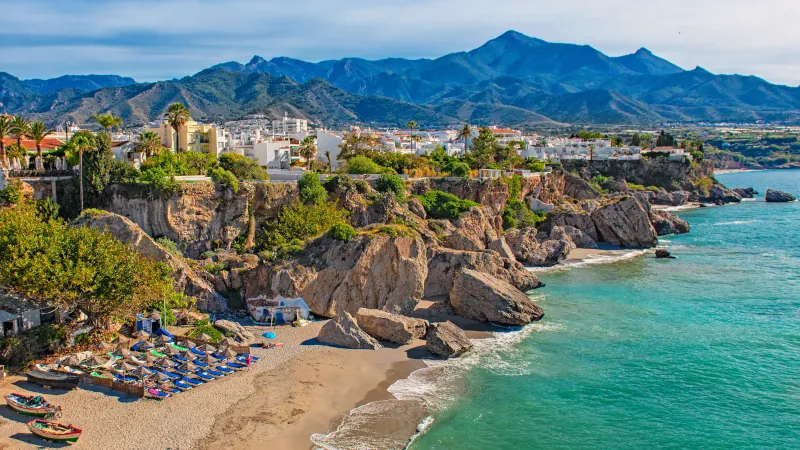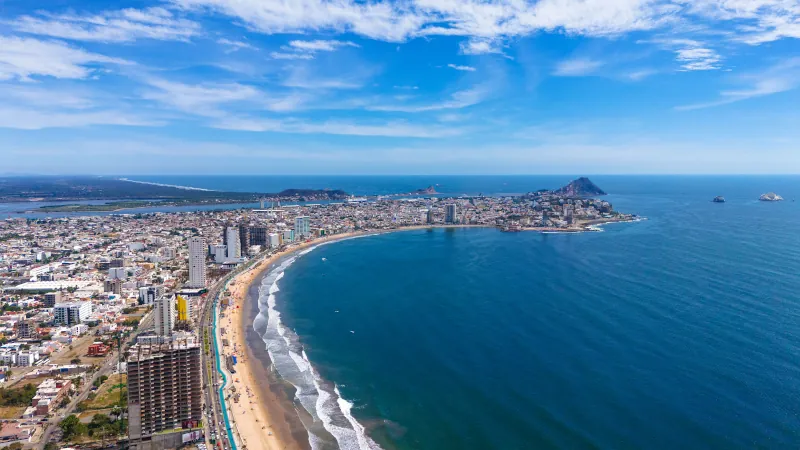Buenos Aires, Argentina- FAQs
Yes. Buenos Aires, Argentina, has a metro system. In fact, it is the oldest in Latin America.
Top Destinations:
Whether you’re looking for fun and sun, a peaceful retirement, or the chance to earn some extra income, you’ve got a real world of opportunity open to you… In short, we’ve done our best to narrow down your best options, but only you can decide the right country for you.
Best For:
How Much Will It Cost You To Live Overseas?
The only honest answer is, we have no idea. And neither does anyone else. The only one who can answer that question is you. Here’s the most important thing to understand about budgeting your new life overseas…
Follow Us:
Join our Weekly Newsletter
Overseas Property Alert
Sign up for our weekly newsletter to receive expert insights on the best international real estate investment opportunities.
Upcoming Events
Live and Invest In Spain Conference
Offshore Wealth Summit
Greece Workshop
VALENCIA, SPAIN
Sep. 17-19, 2025
PANAMA CITY, PANAMA
Oct. 15-17, 2025
VIRTUAL
Nov. 13, 2025
Contact Our Events Team
Reach us with your questions by email at: events@liveandinvestoverseas.com
Unlock The World
Overseas Havens Reports
Conference Kits
Lahardan Books
Our Customer Service team is here to assist with any questions or concerns CustomerService@LiveandInvestOverseas.com
Top Destinations:
Whether you’re looking for fun and sun, a peaceful retirement, or the chance to earn some extra income, you’ve got a real world of opportunity open to you… In short, we’ve done our best to narrow down your best options, but only you can decide the right country for you.
Best For:
How Much Will It Cost You To Live Overseas?
The only honest answer is, we have no idea. And neither does anyone else. The only one who can answer that question is you. Here’s the most important thing to understand about budgeting your new life overseas…
Follow Us:
Join our Weekly Newsletter
Overseas Property Alert
Sign up for our weekly newsletter to receive expert insights on the best international real estate investment opportunities.
Upcoming Events
Live and Invest In Spain Conference
Offshore Wealth Summit
Greece Workshop
VALENCIA, SPAIN
Sep. 17-19, 2025
PANAMA CITY, PANAMA
Oct. 15-17, 2025
VIRTUAL
Nov. 13, 2025
Contact Our Events Team
Reach us with your questions by email at: events@liveandinvestoverseas.com
Unlock The World
Overseas Havens Reports
Conference Kits
Lahardan Books
Our Customer Service team is here to assist with any questions or concerns CustomerService@LiveandInvestOverseas.com
THE 10 BEST PLACES TO RETIRE IN 2025

PLUS: A SPECIAL BONUS DESTINATION
We Value Your Privacy! We will not share your email address with anyone else, period.
Home » Best Countries To Live, Invest, And Retire Overseas » Argentina: Everything You Need To Know 2025 » Buenos Aires, Argentina
Buenos Aires, Argentina: The Bold And Beautiful
Learn more about this and other countries in our free, daily Overseas Opportunity Letter. Simply enter your email address below and we’ll send you our FREE REPORT: The 10 Best Places To Retire In 2025

Perhaps no other city in the world is as beguiling as Buenos Aires, Argentina’s capital city.
Most outsiders only know Argentina in Hollywood clips, blips, and larger-than-life personas, from Evita (as played by Madonna) to the incredible soccer greats like Diego Maradona and Leonel Messi. And let us not forget the Pope is Argentine.
Buenos Aires is how the New World and Old World blend so harmoniously.
Grand dame Art Noveau apartment buildings, dating back centuries with the original crown molding preserved, coexist in the Paris of South America with contemporary, shiny new skyscrapers, and it all works together.

Reviewed By Kathleen Peddicord
Kathleen is the Live and Invest Overseas Founding Publisher. She has more than 30 years of hands-on experience traveling, living, and buying property around the world.



Start Your New Overseas Life Today
A world full of fun, adventure, and profit awaits! Sign up for our free daily e-letter, Overseas Opportunity Letter, and we’ll send you a FREE report on the 10 Best Places To Retire In Style Overseas Today 2024
We Value Your Privacy! We will not share your email address with anyone else, period.
Most importantly, the city is fast-paced and trendsetting in art, design, and style. But, at the same time, the cobbler on the corner and the neighborhood’s beloved tailor are toiling away in the same location where they have been for decades.
Argentines themselves are much like what the city shows, too. They have a deep respect and admiration for the past, yet they are always energetically innovating and looking forward.
Buenos Aires’ most famous cultural export is tango, the song and dance filled with passion, sensuality, longing, and nostalgia that does so much to explain the essence and character, culture, and creativity of Buenos Aires.
In this Latin American city everything is approached, considered, and conducted with passion.
Other destinations in Latin America offer far more affordable retirement options. On the other hand, nowhere else in this part of the world offers a comparable standard of living.
Buenos Aires is a city of neighborhoods, each with its own look, feel, and personality. As a result, foreign residents concentrate especially in Palermo, Belgrano, and Recoleta.
Buenos Aires is a city where you could enjoy a rich, full, even luxury-standard retirement lifestyle on a budget of as little as US$3,000 per month.
| Item | Cost | Notes |
|---|---|---|
| Rent | US$541.63 | City center, one bedroom. |
| Utilities | US$51.24 | Electric, heating, cooling, water, and garbage. |
| Transportation | US$85 | Monthly pass for two (US$7.53 each), a couple of taxi rides. |
| Gym | US$21.45 | Monthly membership for one person. |
| Mobile Phone | US$16 | Monthly Plan with Calls and 10GB+ Data |
| Telephone | US$23.83 | |
| Internet | US$25.84 | |
| Cable TV | N/A | Bundled with internet. |
| Groceries | US$420 | Basic items for a couple, including some imported items. |
| Entertainment | US$260 | Social outings twice a week. |
| US$1,444.99 |
Because of its cozy neighborhoods or maybe the incredible people watching, Buenos Aires is very much a walking city. (Get a good stroller if you have children.) Biking is increasingly popular and bike trails are growing in number— you can rent a bike in Palermo.
There was a time when Buenos Aires had a cutting edge transportation system—after all, it was the first South American city to open a subway system, which remains the fastest way to get around town.
When the British came, they administered the building of the country’s infrastructure, especially its large railway system (and the national banking system). In fact, trains still travel on the left-hand side of tracks—a last stand of British influence.
Today, however, travel in Argentina might come as a shock. First off, Argentines are the second worst drivers on the road. Every driver has his own set of rules.
There is no road rage. It’s accepted that, as they say, “Signs are suggestions. A stop sign is an idea.” Still, cabs are so cheap that some people take a cab both ways to work each day.
In addition, the highways are well maintained. And some laws really work well for drivers. And, if you are forced to wait for more than two minutes before you can pay at a toll, for example, cars begin to beep and the tolls are opened so that traffic doesn’t back up.
Buenos Aires is also known as the Paris of Latin America. And, with few exceptions, anything available in Paris can also be found in Buenos Aires, at lesser cost and with a Latin edge.
This includes five-star restaurants, nightclubs, comedy clubs, open-air cafes, world-class live theater and ballet, art galleries, museums, English-language bookstores, indoor shopping malls and outdoor antiques markets, European-style parks, plazas, and gardens, plus classic-style architecture of the kind found in but a handful of cities around the world.
In short, you can embrace a retirement filled with art and history, culture and interesting company, but you can’t afford Paris, look to Buenos Aires.
It has a tremendous variety and diversity of restaurants, shopping, museums, and parks and does qualify as a walking city—though it’s too big to walk across in one go.
Buenos Aires enjoys four seasons throughout the year.
The city has a warm humid temperate climate with hot summers and no dry season.
Most importantly, the temperature ranges from 46°F to 82°F and is rarely below 39°F or above 88°F.

Reviewed By Kathleen Peddicord
Kathleen is the Live and Invest Overseas Founding Publisher. She has more than 30 years of hands-on experience traveling, living, and buying property around the world.



Start Your New Overseas Life Today
A world full of fun, adventure, and profit awaits! Sign up for our free daily e-letter, Overseas Opportunity Letter, and we’ll send you a FREE report on the 10 Best Places To Retire In Style Overseas Today 2024
We Value Your Privacy! We will not share your email address with anyone else, period.
Yes. Buenos Aires, Argentina, has a metro system. In fact, it is the oldest in Latin America.
 . '
. '
 . '
. '
 . '
. '
 . '
. '
 . '
. '


We Value Your Privacy! We will not share your email address with anyone else, period.
As seen in

© 2008 – Live and Invest Overseas™ – All Rights Reserved.
Sign up to receive the FREE daily e-letter, Overseas Opportunity Letter and we’ll immediately email you our editors’ latest research report…
BEST PLACES TO RETIRE
FREE REPORT:
Sign up for FREE and learn how to live the good life on a modest budget, find bargain property, and more. Plus, check out our free report on the 10 BEST PLACES TO RETIRE.
RETIRE OVERSEAS AND LIVE LIKE ROYALTY
Top Countries
Budgets
Affordable
Resources
Real Estate
Overseas Property Alert
How To Become Independently Wealthy And Fund The Lifestyle Of Your Dreams
Buying Real Estate For Cashflow
Discover tips and strategies used by global property investing veterans
Explore Our Latest Posts
Learn how to invest and purchase property abroad…
Conferences
Live and Invest In Spain Conference
Offshore Wealth Summit
GREECE WORKSHOP
Contact Our Events Team:
Toll-Free U.S. and Canada:
1 (888) 627 8834
From Outside North America:
1 (443) 599 1221
Working Hours
Monday – Friday 08:00 am – 17:00 pm EST.
Reach us with your questions by email at: events@liveandinvestoverseas.com
Store
Overseas Havens Reports
Conference Kits
Lahardan Books
Services
Free Report
THE 10 BEST PLACES TO RETIRE IN 2025

Sign up to receive the FREE daily e-letter, Overseas Opportunity Letter and we’ll immediately email you our editors’ latest research report…
We Value Your Privacy! We will not share your email address with anyone else, period.
Follow Us:
© 2008 - Live and Invest Overseas - All Rights Reserved.